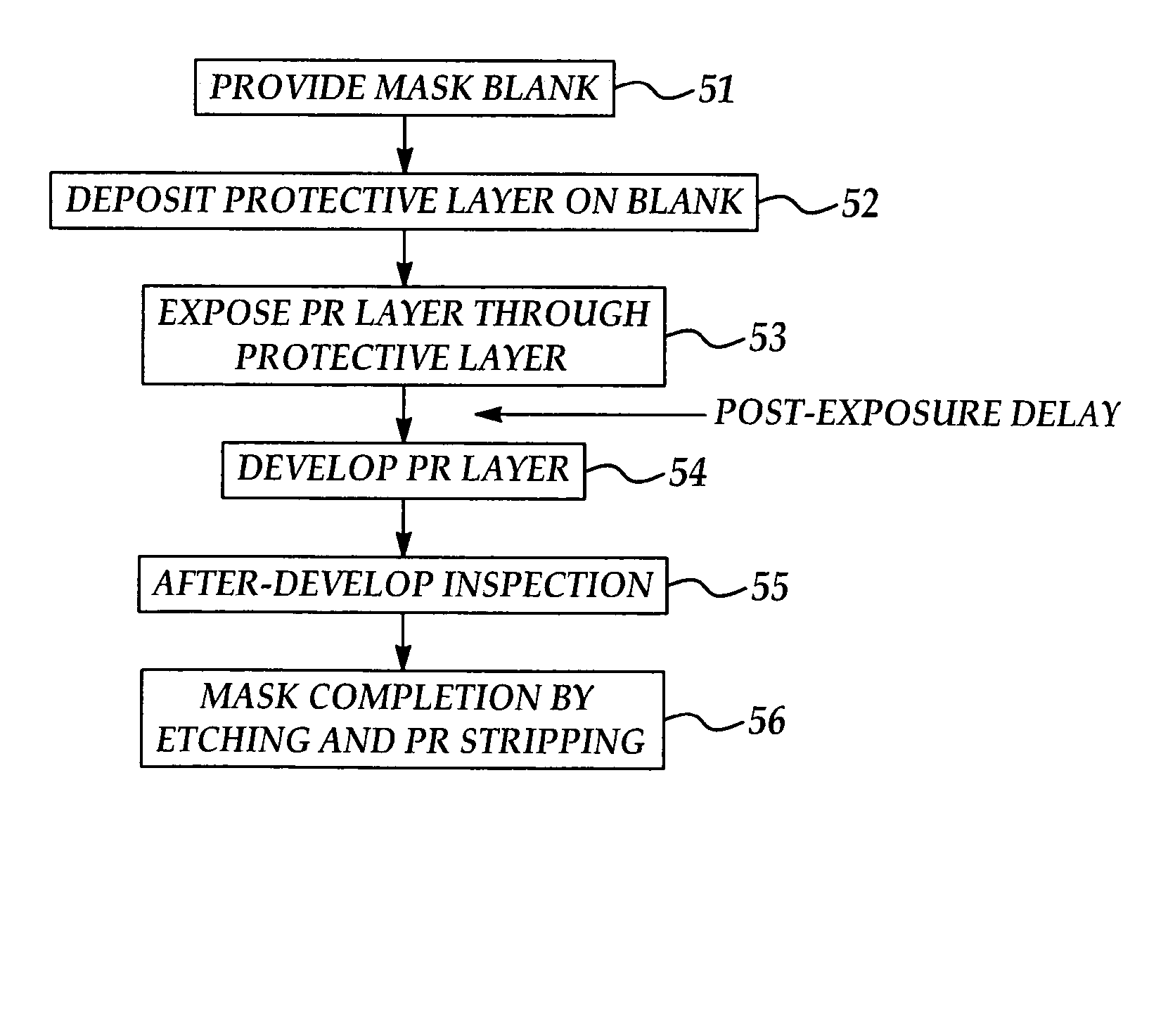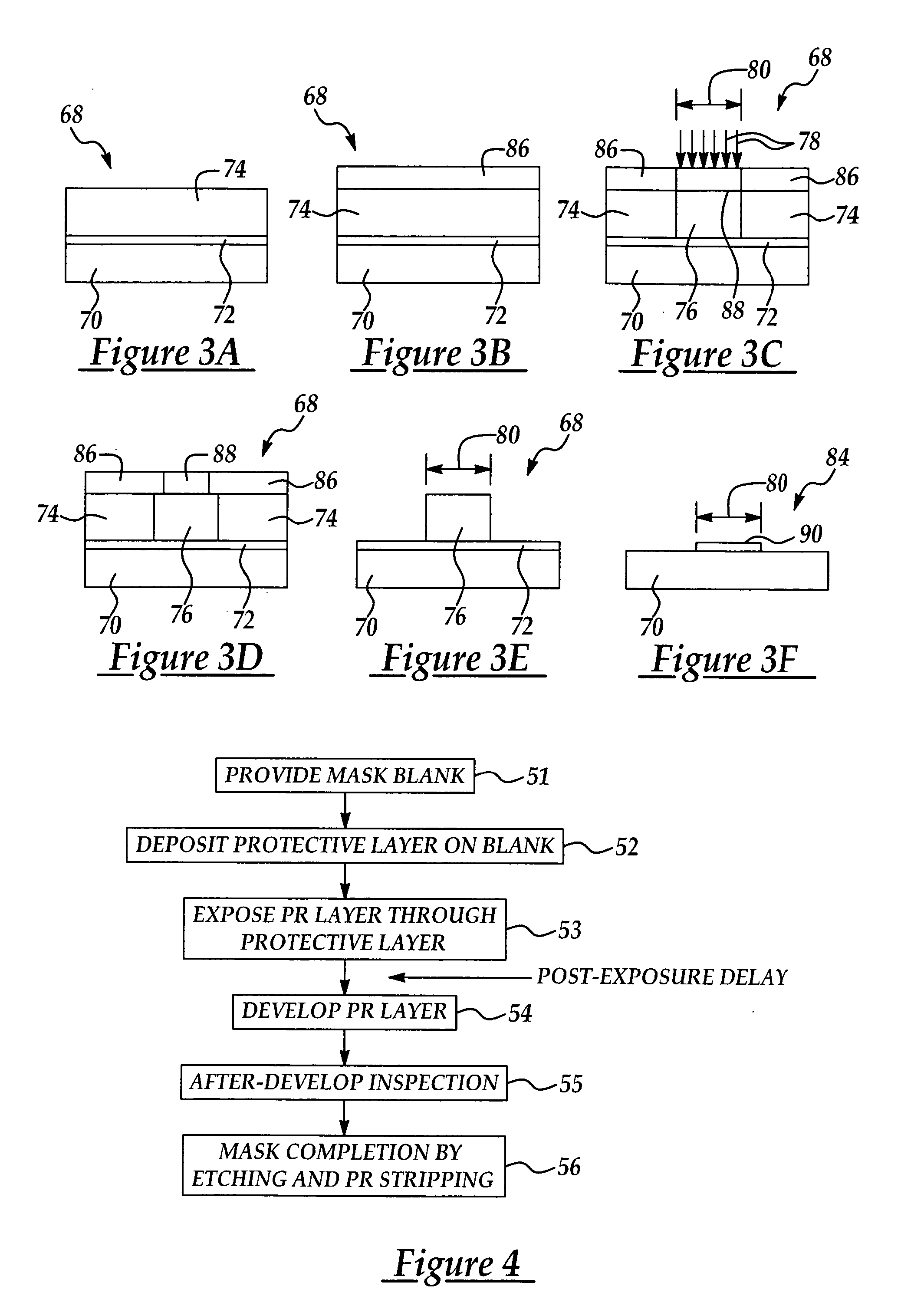Composite layer method for minimizing PED effect
a composite layer and ped effect technology, applied in the field of photolithography processes, can solve problems such as adversely affecting the dimensions of device features, and achieve the effects of reducing the post-exposure delay (ped) effect, preventing or minimizing the q-time narrowing of the photo-cracked effect, and eliminating or preventing the ped
- Summary
- Abstract
- Description
- Claims
- Application Information
AI Technical Summary
Benefits of technology
Problems solved by technology
Method used
Image
Examples
first embodiment
[0042] Referring to FIGS. 2A-2F, in the method according to the present invention, in a first step a mask blank 38 is obtained. The mask blank 38 includes a transparent substrate 40, such as quartz, and a typically metal blanket layer 42 such as chromium sputtered on the transparent substrate 40. The mask blank 38 may be conventional and is obtainable from the Hoya corp., for example. A layer of positive or negative photoresist 44, which may be multi-layered, is coated on the blanket layer 42. As shown in FIG. 2B, in a second step according to the method of the invention, a protective layer 56, which may be an organic positive or negative photoresist, is coated on the photoresist layer 44. The protective layer 56 may be a low-sensitivity negative-type chemical amplified resist (CAR) known by those skilled in the art. The mask blank 38 is then soft-baked at typically about 95 degrees C. for typically about 300 seconds to drive off solvent and harden the protective layer 56.
[0043] In ...
second embodiment
[0046] Referring next to FIGS. 3A-3F, in the method according to the present invention, as a first step a mask blank 68 is obtained. The mask blank 68 includes a blanket layer 72 such as chromium which is sputtered on a transparent substrate 70, such as quartz. A layer of positive or negative photoresist 74 is provided on the blanket layer 72 of the mask blank 68. As shown in FIG. 3B, in a second step according to the method of the invention, a protective layer 86, which may be an organic positive or negative photoresist, is deposited on the negative photoresist layer 74. The protective layer 86 is tyically a low-sensitivity negative-type chemical amplified resist (CAR) known by those skilled in the art. The mask blank 68 is then soft-baked at typically about 95 degrees C. for typically about 300 seconds to drive off solvent and harden the protective layer 86.
DESCRIPTION OF THE PREFERRED EMBODIMENTS
[0047] In a third step according to the method of the invention, shown in FIG. 3C, t...
PUM
| Property | Measurement | Unit |
|---|---|---|
| diameter | aaaaa | aaaaa |
| width | aaaaa | aaaaa |
| width | aaaaa | aaaaa |
Abstract
Description
Claims
Application Information
 Login to View More
Login to View More - R&D
- Intellectual Property
- Life Sciences
- Materials
- Tech Scout
- Unparalleled Data Quality
- Higher Quality Content
- 60% Fewer Hallucinations
Browse by: Latest US Patents, China's latest patents, Technical Efficacy Thesaurus, Application Domain, Technology Topic, Popular Technical Reports.
© 2025 PatSnap. All rights reserved.Legal|Privacy policy|Modern Slavery Act Transparency Statement|Sitemap|About US| Contact US: help@patsnap.com



